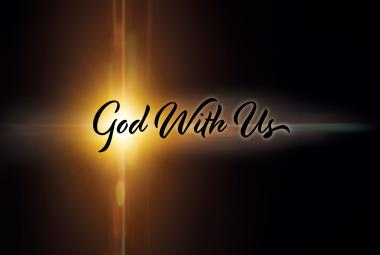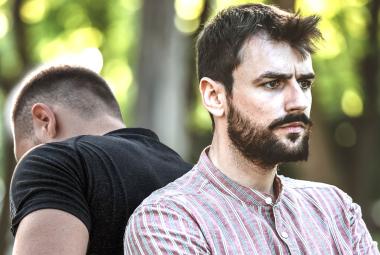Last month’s Personal Update article introduced the reader to “Correspondence Truth,” which requires that any truth corresponds to reality or fact(s) Bertrand Russell states, “Although truth and falsehood are properties of beliefs, they are properties dependent upon the relations of the beliefs to other things, not upon any internal quality of the beliefs.” Truth and falsehood, rather than being inherent to the assertion, are determined by supporting data and information. To conclude otherwise risks a kind of circular reasoning that unfortunately pervades throughout what passes for reasoning today. Legal professionals call these facts “evidence” and enter such evidence into the court record from which they make their case. Many familiar books evoke this “case from evidence structure” such as Evidence That Demands a Verdict by Josh McDowell and The Case for Christ by Lee Strobel. Bob Cornuke, a regular speaker at our Strategic Perspective International Conference in Idaho, includes the following on his website for the BASE Institute:
“We acknowledge (the Bible) as our reliable standard of truth. Using the Bible and other historic sources, coupled with scholarly research supported by archaeological evidence, BASE endeavors to dispel the notion that the Bible is a collection of fables and legend.” [1]
The “Federal Rules of Evidence”[2] codify sixty-seven individual rules grouped into eleven articles which judges and lawyers meticulously master if they want to apply them in the courtrooms in which they practice.
Neither this article nor this author claim this sort of scholarship. It is enough to determine whether evidence is good evidence to remember this: “Evidence must be both reliable and relevant.” Dr. Missler captures this in one of his vignettes he peppers throughout his teachings and it goes something like this — When confronted by the claim of the remarkable accuracy of an atomic clock, he asked the two questions which needed to be asked: “How do we know?” and “Why do we care?” The first question explores the reliability of the data and the second question requires even trustworthy data to be useful and applicable.
The Bible meets this dual test of evidence. “All scripture is given by inspiration of God, and is profitable for doctrine, for reproof, for correction, for instruction in righteousness.”[3] Beyond this textual claim, its prophetic accuracy (e.g., The Seventy Weeks of Daniel, The Virgin Birth), its heptadic structure and its historical accuracy are among the many compelling reasons to conclude the Bible is reliable. And Paul lists four ways — doctrine, reproof, correction and instruction in righteousness — in which it is relevant regardless of the century in which it is read. Isaiah asserts, “The grass withereth, the flower fadeth: but the word of our God shall stand for ever.”[4] There is evidence for the Bible as “an integrated message system from outside our time domain.” The Bible is itself a valuable piece of evidence when supporting an assertion or claim.
Consider the following. Shortly after the United States Supreme Court’s decision regarding homosexual marriage,[5] I found myself in a conversation among my office colleagues. When they asked me my opinion on the ruling, my response went something like this. “What you consider a contract, I call a covenant. What you consider secular, I view as sacred. So we already diverge on the very nature of marriage. More than anything, the Supreme Court position relies on the sufficiency of a majority when instead my position relies on the necessity of an Authority. And I want to enter into evidence a document to which you will likely object. I refer to the Holy Bible.” Among these “legal eagles” I had no better argument than one based on the evidence found in Genesis 2:24, Mark 10:7–8 and Ephesians 5:31. “Therefore shall a man leave his father and his mother, and shall cleave unto his wife: and they shall be one flesh.” I wanted nothing more than to “enter into evidence” these passages. (It is interesting to note there are (two or) three witnesses[6] — Moses, Jesus and Paul!) Had the conversation been in a courtroom instead of the break room, a judge would have addressed their objections to my reliance on the Holy Bible as evidence. “Sustained!” “Overruled!” Enough television shows and movies are set in courtrooms for us to be familiar with this process even if we are not proficient. But we need a familiarity and a functionality when we are practicing “contending earnestly for the faith” in the courtrooms in which we find ourselves — our workplaces, our homes, our neighborhoods and even our churches.
Let’s take a look at some simple reliability tests that you can apply when reading an article or hearing a news clip. Is the evidence based on eyewitness testimony or on secondhand information? The apostles had as a distinctive that each was an eyewitness to the Resurrection. (See Acts 1:21–22) Testimony loses reliability when it is from a second (or third!) hand source. This is often referred to as hearsay when it applies to a conversation outside the courtroom. Where eyewitness testimony is not available, multiple sources confirming the claim become more important. We hear of horrific crimes on the news and these stories often cite “multiple eyewitnesses” of the tragedy. Of course, we have no sense of the credibility of these eyewitnesses or whether they are qualified to render relevant testimony. In a courtroom, whether entering testimony or a document, the court requires a foundation be laid first. Laying a foundation is “(t)he act of demonstrating to a judge that a piece of evidence a litigant would like to introduce meets evidence rules requirements concerning authenticity and trustworthiness. For example, a medical report cannot be introduced unless the physician who wrote it testifies that he wrote it; and a photograph must be authenticated by the photographer or by testimony that it truly reflects a particular place or event. Even after a proper foundation is laid, however, evidence can still be excluded if, for example, it is not relevant to the point for which it is being offered.”[7] At the very least we need to insist on eyewitness testimony or multiple testimony from sources both known and trusted.
Relevance is often in the eye of the beholder and so common is the habit to reject as irrelevant the information which does not support our position that this tendency is named. Confirmation bias is readily seen by those who rely on one news source. I have friends who swear by Fox News and others who swear at it! NPR for some of my acquaintances stands for National Public Radio while others insist it stands for No Point in Regarding! I suggest that information that is confirmed by both sources is likely the most reliable and, where they differ, the “whole truth and nothing but the truth” is likely found by combining both sources. F. Scott Fitzgerald wrote, “The test of a first-rate intelligence is the ability to hold two opposed ideas in the mind at the same time, and still retain the ability to function.”
So truth corresponds to evidence and that evidence must be both relevant and reliable. Next time we will look at The Rhetoric on Rhetoric and examine how to make a convincing argument supporting your position. In the meantime, you might want to look at our featured products.





